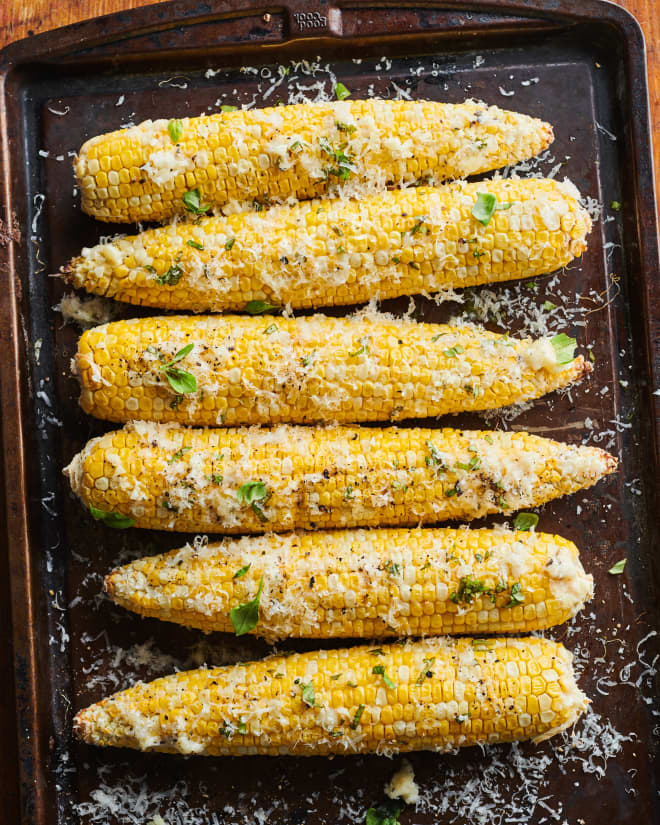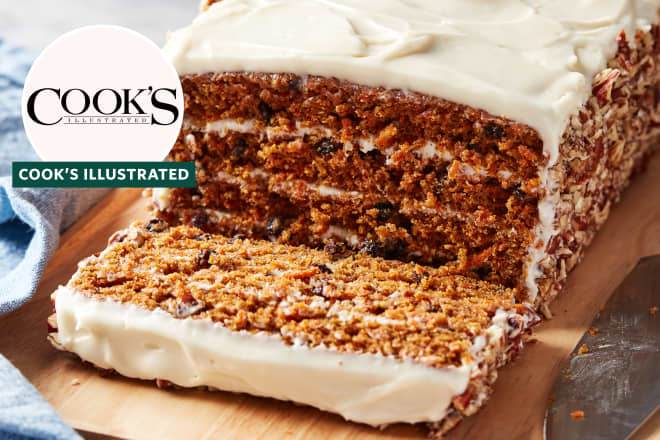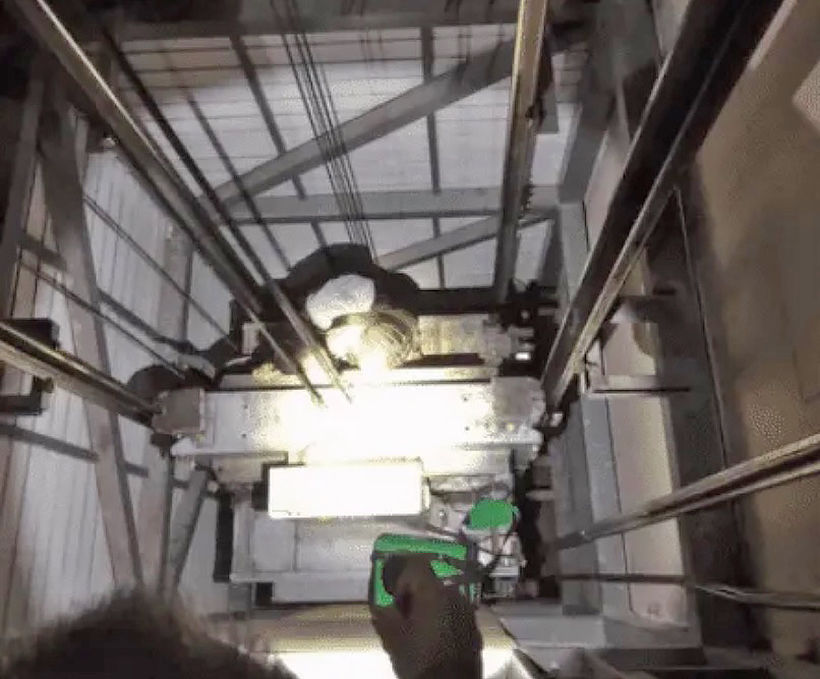You’re in the swing of things, flipping between pages of your textbook or work schedule, writing important things down, and getting tons of stuff done. Then, you reach for your stapler, but it’s not on your desk! Or could it be tucked behind your laptop screen? Did you take it to another room? You spend 5 full minutes scrounging for that lousy stapler and now you’re totally out of sync. We’ve all been there. A disorganized office can be a real nightmare when you’re trying to get things done. Luckily, there are plenty of ways to clean that busy desk up, rearrange your room, and add some storage space to get back on track and stay productive.
[Edit]Steps
[Edit]Cleaning Your Desk Up
- Seperate things you use every day for work from everything else. Your computer, keyboard, mouse, and a pencil cup are all mandatory. If you don’t have overhead lighting, you need a lamp. Everything else is dependent upon what your work entails. If you have allergies, you could keep a box of tissues on your desk. If you tend to lose track of time, you may want to keep a clock nearby.[1] Set aside anything you’ll use every day to keep it on your desk.
- If you’re a student, you may want to keep a stack of index cards or a calculator on your desk.
- Student or not it is very recommendable to have a particular smell or aroma substances.Thi is because they stimulate the brain and as a student you can relate the smell with the text you are reading and you could remember it easier. As an office person you will feel more comfortable and concentrated.
- It’s okay to keep a paper organizer on your desk if you’re using it every day. If you aren’t though, you’re better off storing all of that paper somewhere else.
- Choosing whether to keep something like a tape dispenser on top of your desk depends on how much space you have and how often you use it. There are no hard rules here, so just do whatever makes sense to you.
- Throw out or move anything in the pile you won’t use every day. The cleaner your desk is, the clearer your mind will be. Get rid of any old to-do lists, pointless scraps of paper, and trash. If you have headphones, books, or notes sprinkled all over your desk, put them away or find a different place for them. You probably don’t need more than 5-10 writing utensils, so move those extra pens and pencils as well.[2]
- A little bit of clutter isn’t intrinsically bad—a lot of people kind of feel uncomfortable with too much empty space. Just make sure that your desk is purposeful. A home office should feel like a workspace, not a play space or storage area.
- Move your lamp, pens, and accessories to one location on your desk. Compartmentalizing all of the mandatory items and placing them in one place makes it a lot easier to keep track of things. Put your pencil cup, lamp, stapler, and tape dispenser all next to one another. Keep them near a corner of your desk if possible. This will free up some space on your desk and make it easier to stay organized.[3]
- If you’re right-handed, put all of this stuff on the left if you can and vice versa. This way, you can free up the right side of your desk so you can work on something without turning your chair or moving things around.
- Clean your drawers out and reorganize by grouping similar items together. If you have drawers (or a storage cabinet), take everything out. Clean out any crumbs or dust and throw out anything you don’t need. Take non-work-related items to another room. Then, group your items together based on when you’ll need them or what you’re using them for, and place them in dedicated drawers or spaces. You can even use drawer dividers to create separate sections in each space as well![4]
- For example, you may put your pens, pencils, and highlighters in one drawer, paper supplies in another, and tools (like your calculator, stapler, and tape dispenser) in a third drawer.
- If you have a lot of art supplies or something, divide your drawers to keep different supplies separated. You could put all of your brushes in one drawer, your paint tubes in another drawer, and miscellaneous tools (like erasers or palette knives) in a third drawer.
- Get rid of visual clutter and personal items to keep the desk space clean. Inspirational quotes and family photos are great, but that kind of stuff can distract you. They may even subconsciously interrupt your ability to process information or focus on what you’re looking at. If your heart can handle it, get rid of those random knickknacks, photos, and decorative items to free up space.[5]
- If you’re going to leave something unrelated to work on your desk, limit yourself to just one photo or desk toy.
- Transfer post-it notes and paper reminders into digital documents. If you have a bunch of paper piling up on your desk or your corkboard is overflowing with push pins and meeting reminders, it may be time to go digital. Scan your calendar, install a scheduling program, or even open a word document and transfer all of your notes and lists.[6]
- If you love your sticky notes and you have a Windows computer, there’s a sticky note widget you can enable/install to keep your notes on your desktop.
- Hide the power strip and tie any loose cables together. Tuck your power strip behind or under your desk to keep it out of sight. If you have a bunch of cables hanging out the back of your desk, bundle them together with a cable sleeve or zip ties. If any of your cables are too long, replace them with shorter versions of the same cable or tie them up together to make them shorter.[7]
- There are cable clips you can buy to hold loose wires on the edge of your desk when you aren’t using them. These are a great option if you have a bunch of chargers and USB ports you regularly use but you can’t keep them plugged in all the time.
- A wireless keyboard and mouse are a great way to keep your desk space neat and wire-free if this is a big priority for you!
- Dedicate 20 minutes a week to reorganizing your desk. You aren’t always going to be perfectly organized, and things naturally end up misplaced when you’re working in your office. Set aside 20 minutes once a week to reset everything and put it back where it belongs. This is an especially important tip if you work from home and things tend to get out of hand during the work week.[8]
- Set a reminder in your phone or on your desktop to reorganize your desk. This way it won’t slip your mind.
[Edit]Arranging the Room
- Place your desk away from the door to maximize your workflow. If your desk is right next to the door, you may get distracted by family members or roommates making noise outside. It can also make it feel like you aren’t really in an office, since you’ll be unlikely to use the corners further away from the door. Placing the desk away from the door also gives you the opportunity to pick up things you need on your way to the desk, which can make starting work a bit easier.[9]
- A lot of people like it when the desk faces the door. If you just tuck your desk against a wall, you may feel a little claustrophobic. The room will also feel a lot smaller since you’re going to be staring a wall just behind your computer or work space.
- Orient the desk to take advantage of any natural light. Note where the windows in your office are located, if you have them. Either face the window directly, or turn your desk so that you sit parallel to the window pane. This will brighten up your workspace and make the office feel more productive and bright if you work during the day.[10]
- If you don’t have a window in your office, consider facing the door and leave it open. This way, you’ll at least get some natural light bleeding in from the hall or room next door.
- Create a comfortable space with carpets, plants, or bookshelves if you want. Some people prefer a hyper-minimalist office with little-to-no additional furniture. If you want to keep some reference books nearby, there’s nothing wrong with placing a bookshelf in the room. Throw in a colorful floor carpet and some plants if you want to make the space more welcoming. Just remember, you don’t want to overdo with the visual noise when it comes to decorating.[11]
- Feel free to throw some paintings or photos on the walls. Just try to minimize the amount of stuff you can see while you’re sitting at your desk. It doesn’t matter if the walls behind you are a little busy, though.
- Make sure everything in your office will help you stay productive. When you’re arranging and furnishing your office, ask yourself “Is this going to make me more productive?” If the answer is no, keep it out of your office. Fancy end tables, extra chairs, stacks of recreational reading, and unused cabinets are just going to add to the visual clutter. If it won’t help you get work done or it won’t put your mind at ease, you don’t need it.[12]
- Unless you’re a day trader or journalist following breaking news while you work, keep the TV out of your office.
- Find a quiet corner to set an office up if you don’t have a dedicated room. You can still set an office up if you don’t have a separate room for it! Choose an unoccupied corner or wall in a part of your home where you won’t be bothered (your bedroom is a good option). Orient your desk away from the middle of the room so you won’t be distracted. This will also help your desk feel like a dedicated workspace.[13]
- If you have a really wide closet that you aren’t using, this can be a great place for your desk. You could even close the door to hide the office if you have guests over!
- If you’d like, you can hang a curtain or set up room dividers to separate your office from the rest of your home.
- When choosing a desk for a non-office work space, try to match it up with the rest of the décor in your home so it doesn’t stand out.
[Edit]Adding Storage Space
- Put a shelf over your desk if you have the wall space. If you’re short on storage space, hang a wall shelf near your desk so you can quickly reach for something you need. This is a great option if your desk is on the smaller side and you don’t have any drawers, but you have plenty of wall space. On top of that, the work supplies on your wall will serve as a visual reminder to focus on the task at hand.[14]
- A few shelves above your desk is a great solution if you have a handful of reference books you use regularly when you work from home.
- You could always install a pegboard or wall organizer instead of a shelf if you need storage for a bunch of different supplies.[15]
- Place a storage caddy under your desk to get office supplies fast. If you have a bunch of forms, documents, or supplies that you need to grab fast and you don’t have a ton of space, swing by an office supply store and pick up a storage caddy. Fill it up and set it down under your desk where it will be out of sight while you work. This way, you won’t take up precious desk space but you’ll still be able to reach for what you need without disrupting your workflow or sifting through cabinets.[16]
- Storage caddies come in all sorts of shapes and sizes, so pick one that has enough compartments for your storage needs and matches your room’s décor.
- Get a filing cabinet if you’re floundering in random paper. They’re kind of old school, but a filing cabinet is the perfect solution if your work involves a lot of paperwork. Get a bunch of hanging folders in a variety of different colors and organize all of your paperwork. For example, you could keep tax information in yellow folders, personal records in red folders, and client information in your blue folders. Label each of the tabs on your folders so you can quickly find what you need.[17]
- Another way to do it is to label each folder with a keyword and then arrange them alphabetically. This is a great option if you don’t want to color-code everything.
- If you can, try to find a filing cabinet that’s the same height as your desk. This way, you can set it next to your desk and basically extend your work surface.
- The top of a filing cabinet is often the perfect size for a printer if you have one.
[Edit]Setting Your Office Up
- Choose a desk with enough storage and space for your work. If your work is mostly done on the computer, you probably don’t need a ton of drawers. If you are a lawyer or accountant, you probably need a ton of drawers to store a bunch of papers and supplies. Measure your space with a measuring tape and determine where you’re going to place your desk. Purchase a desk that matches the vibe you’re going for in your home office.[18]
- Desks come in all types and sizes. Executive desks have tons of storage space and lots of drawers. These are a good all-around option. You can get a minimalist desk with no drawers at all if you like a cleaner look. The writing desk is a good option if you only need a surface for your laptop.[19]
- Purchase a comfortable, adjustable office chair with a reclining back. Bad ergonomics can make the most organized of offices feel unwelcoming. Make sure your chair is comfortable and has good lumbar support. There’s no reason to get anything other than a chair with an adjustable back and height, since you can customize it to sit down with your feet perfectly flat. Make sure it has armrests and a comfortable seat to keep back pain from ruining your work day![20]
- If you can, avoid buying an office chair online. Buy your chair in a store where you can sit down in it and test how it feels. Different people prefer different things in an office chair, so don’t assume you’ll love something with glowing reviews from an online shop!
- Get an adjustable task lamp that will fit on your desk. Look either for a lamp that can be bent at an angle where you can control the light, or a lamp with a built-in dimmer so you can adjust the brightness. Consider how much natural or overhead lighting you’ll have before you purchase a super-powerful lamp. You typically don’t need anything too big or strong for a task lamp, so don’t overdo it.[21]
- You don’t have to use a task or table lamp if you don’t want to. If you like overhead lighting and your desk is in front of a window, you really don’t need one.
- You can set up 1-2 standing lamps in the corners of your room to make it brighter without putting a lamp on your desk.
- Raise your computer up to eye level and keep the keyboard flat. Sit down in your office chair and look straight ahead. This is where the top of your computer screen should go. Either adjust the height of your monitor, or set it on top of a stand to elevate it and avoid neck strain.[22] Either keep your keyboard flat, or tilt it a little away from you if possible. It’s hard to maintain a neutral wrist if your keyboard slopes up away from you.[23]
- Your computer screen should be roughly from your eyes. If it’s farther than that, you’ll have to squint to read the screen. If it’s too close, you’ll end up with eye strain.
- If you’re using a laptop, there are laptop stands you can buy to raise the position of your screen. You may want to connect a secondary keyboard and mouse to the laptop so you can keep your wrists straight, though.
- You could get some blue light glasses to reduce the amount of strain your eyes experience if you spend more than 2-3 hours a day at your computer.
[Edit]Related wikiHows
[Edit]References
- ↑ https://www.fastcompany.com/3051809/6-productivity-experts-tell-us-whats-on-their-desks-an
- ↑ https://hbr.org/2019/03/the-case-for-finally-cleaning-your-desk
- ↑ https://www.goodhousekeeping.com/home/organizing/g25576393/desk-organization-ideas/
- ↑ https://money.cnn.com/2015/01/30/pf/jobs/desk-organized-tips/
- ↑ https://money.cnn.com/2015/01/30/pf/jobs/desk-organized-tips/
- ↑ https://www.inc.com/christina-nicholson/7-steps-to-feeling-more-organized-at-your-desk.html
- ↑ https://www.makeuseof.com/tag/clean-up-computer-cable-clutter/
- ↑ https://www.businessknowhow.com/homeoffice/organize-home-office.htm
- ↑ https://www.hgtv.ca/offices/photos/how-to-get-good-feng-shui-in-your-home-office-1906548/#currentSlide=3
- ↑ https://www.fastcompany.com/3023303/10-quick-tips-to-bring-your-home-office-to-another-level
- ↑ https://www.architecturaldigest.com/gallery/home-offices-slideshow
- ↑ https://www.fastcompany.com/3023303/10-quick-tips-to-bring-your-home-office-to-another-level
- ↑ https://timesofsandiego.com/life/2017/03/18/weekend-design-11-tips-successful-office-bedroom-setup/
- ↑ https://www.goodhousekeeping.com/home/organizing/g25576393/desk-organization-ideas/
- ↑ https://www.goodhousekeeping.com/home/organizing/g25576393/desk-organization-ideas/
- ↑ https://www.goodhousekeeping.com/home/organizing/g25576393/desk-organization-ideas/
- ↑ https://youtu.be/xw8TUXdk0XU?t=46
- ↑ https://www.mymove.com/home-inspiration/other-rooms/how-to-choose-the-perfect-furniture-for-your-home-office/
- ↑ https://curatedinterior.com/desks/
- ↑ https://www.apartmenttherapy.com/the-6-things-you-need-to-look-for-in-a-home-office-chair-169027
- ↑ https://www.remodelista.com/posts/remodeling-101-how-to-light-the-home-office/
- ↑ https://www.gvsu.edu/officeergonomics/computer-monitor-8.htm
- ↑ http://ergo.human.cornell.edu/AHTutorials/typingposture.html






























 Give corn on the cob a proper send-off.
Give corn on the cob a proper send-off.














 It's unlike any other carrot cake we've seen.
It's unlike any other carrot cake we've seen.


















 When thin-sliced zucchini stand in for lasagna noodles, the emphasis shifts to the best parts of lasagna: the tomato sauce, the cheese, the veg.
When thin-sliced zucchini stand in for lasagna noodles, the emphasis shifts to the best parts of lasagna: the tomato sauce, the cheese, the veg.













































 Stick with us while one Kitchn staffer professes her love.
Stick with us while one Kitchn staffer professes her love.